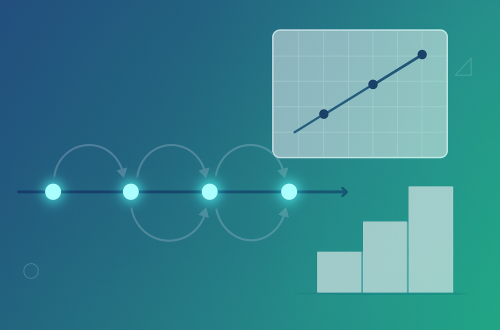Mathematics is often introduced to students as if it appeared fully formed, a catalog of polished formulas waiting to be memorized and applied. Yet the formulas we learn in classrooms are the results of centuries of experimentation, debate, failure, refinement, and imagination. Each equation carries a story: of ancient astronomers mapping the sky, of medieval scholars translating texts across languages and cultures, of Renaissance thinkers unifying geometry and algebra, and of modern scientists interpreting the invisible world of atoms and curves. Understanding how mathematical formulas developed over time shifts our perspective. Instead of treating formulas as rigid rules, we begin to see them as creative solutions to practical and theoretical problems. They represent the evolving conversation of humanity with the universe.
This essay traces several major formulas and mathematical ideas, exploring how they were discovered, shaped, and transformed. The goal is not merely historical, but conceptual: by studying how formulas evolved, students gain a deeper understanding of mathematical reasoning itself. Rather than memorizing an expression, we learn why it looks the way it does—and how earlier mathematicians reasoned their way toward it. In this way, mathematics becomes less about recall and more about insight.
From Geometry to Algebra: The Pythagorean Theorem and Its Legacy
The Pythagorean theorem is often one of the earliest formulas students encounter, stated simply as
, relating the sides of a right triangle. Yet the theorem predates Pythagoras and transcends its symbolic form. Evidence suggests that ancient Babylonian mathematicians understood this relationship more than a thousand years before Pythagoras. Clay tablets such as Plimpton 322 record Pythagorean triples—sets of integers that satisfy the theorem—suggesting that builders and astronomers used these relationships for practical measurement.
What Pythagoras and his followers contributed was not the formula itself but the philosophical idea: that geometry reflects deep numerical patterns, and that numbers structure the universe. Later Greek thinkers such as Euclid re-expressed the theorem within the deductive framework of Elements, transforming a rule of measurement into a theorem proven from first principles. Euclid’s proof did not rely on numbers, but on area equivalence. This abstraction allowed mathematics to move beyond physical intuition toward general concepts.
The algebraic form
came much later, once algebra gained symbolic notation in the Renaissance. Before symbolic algebra, mathematicians expressed relationships through words, making both discovery and communication slow. When François Viète and later René Descartes introduced symbolic variables and coordinate geometry, the theorem became portable across contexts—used not only in geometry but also in physics, navigation, and engineering. What began as a geometric insight became a universal expression of spatial relationships.
Today the theorem lives far beyond triangles. It underlies the concept of distance in analytic geometry and even defines how distance is measured in vector spaces. In essence, the Pythagorean theorem evolved from a practical rule to a philosophical principle to a general mathematical structure. Its history demonstrates how a formula gains new layers of meaning as mathematical language evolves.
The Quadratic Formula: Solving Equations Across Time and Cultures
The quadratic formula,
, is a staple of algebra education. Yet its story stretches across thousands of years and multiple civilizations. In ancient Babylon, mathematicians solved quadratic problems using geometric reasoning. Problems were posed verbally, often framed as land measurements or inheritance divisions. Solutions involved completing geometric squares—an operation that persists today in the method of completing the square.
In ancient India, Brahmagupta developed a general solution to quadratic equations in the 7th century, presenting rules that resemble modern symbolic approaches, though expressed rhetorically. Meanwhile, Islamic mathematicians such as al-Khwarizmi in the 9th century systematized algebra itself. Al-Khwarizmi solved quadratic equations by classification—six separate cases depending on types of terms—because negative numbers were not yet accepted, so the formula we recognize could not yet exist.
The breakthrough came later in Europe, where negative numbers and zero gradually became accepted as legitimate mathematical objects. Once algebraic notation matured, mathematicians could write a unified formula that worked for all cases of quadratic equations. The discriminant
emerged as a conceptual milestone: it tells us not only how many solutions exist but reveals the relationship between algebra and geometry. A positive discriminant corresponds to intersections of curves; a zero discriminant to tangency; a negative discriminant to imaginary or complex solutions.
Thus, the quadratic formula reflects the evolution of mathematical thought from concrete geometry to abstract algebra, from real numbers to complex systems. Each transformation required cultural shifts in how numbers themselves were understood. What students often see as a mechanical formula is actually the culmination of philosophical developments in the nature of mathematics.
Trigonometric Identities and the Global Exchange of Knowledge
Trigonometry, particularly formulas such as
or the angle-sum identities, emerged not from pure mathematical curiosity but from astronomical necessity. Ancient Greek astronomers like Hipparchus used trigonometric tables to track planetary motion. Indian mathematicians refined sine and cosine concepts, while Islamic scholars such as Al-Battani developed advanced tables and introduced the tangent function.
These formulas traveled across cultures through translation networks—Greek texts to Arabic, Arabic to Latin. As navigation expanded during the Age of Exploration, trigonometry became essential for mapping oceans and stars. The identity
has geometric roots in the unit circle but took centuries to stabilize into symbolic form. Earlier mathematicians used ratios, arcs, and chords; only with analytic geometry and the coordinate plane did the visual and algebraic representations fuse.
This history reminds us that formulas are not isolated creations. They are products of cultural exchange, political power, technological need, and philosophical worldview. Mathematics grows globally, not individually.
Calculus and the Formalization of Change
The development of calculus in the 17th century marked one of the most transformative periods in mathematical history. Isaac Newton and Gottfried Wilhelm Leibniz, working independently, recognized that many natural phenomena—motion, growth, accumulation—could not be adequately described by static geometry or algebra. Their central insight was that change itself could be measured and represented mathematically.
The derivative, expressed as
, emerged as a way to measure instantaneous change, while the integral measured accumulation. Yet the formulas of calculus were initially controversial. Early mathematicians lacked a rigorous foundation for the infinitesimal quantities at the heart of the method. It was only in the 19th century, through the work of Cauchy, Weierstrass, and Riemann, that limits provided a rigorous definition. In other words, the formulas came first; the meaning arrived later.
Today, calculus appears standardized, but its evolution highlights the creative tension between intuition and rigor. Newton visualized motion through geometry; Leibniz approached it algebraically with symbolic notation. Their differing viewpoints shaped the development of mathematics in England and continental Europe for generations.
Table: The Evolution of Key Mathematical Formulas
| Formula / Concept | Early Origins & Culture | Key Developments | Modern Interpretation / Use |
|---|---|---|---|
| Pythagorean Theorem
|
Babylonian geometry (1800 BCE) | Euclid formalizes proof; symbolic algebra emerges | Defines distance in Euclidean and vector spaces |
| Quadratic Formula
|
Babylonian and Indian geometric reasoning | Al-Khwarizmi’s algebra; acceptance of negative numbers | Unifies solution of all quadratic equations; discriminant analysis |
| Trigonometric Identities
|
Greek astronomy; Indian trigonometry | Islamic refinement; analytic geometry formalization | Used in wave theory, physics, engineering, signal analysis |
| Calculus
, |
Newton and Leibniz (17th century) | 19th-century rigorization via limits | Foundation of modern science, modeling, and technology |
Conclusion
Mathematical formulas are not frozen instructions; they are living artifacts of human thought. They evolved across civilizations, shaped by practical needs, philosophical debates, and linguistic innovation. By exploring their development, students shift from memorizing expressions to understanding the reasoning behind them. This historical perspective reveals mathematics as a human story—a narrative of curiosity, creativity, failure, insight, and transformation.
Understanding how formulas developed deepens appreciation for the subject and encourages students to see mathematics not as a closed system of rules, but as an evolving dialogue about the world and our place within it.

